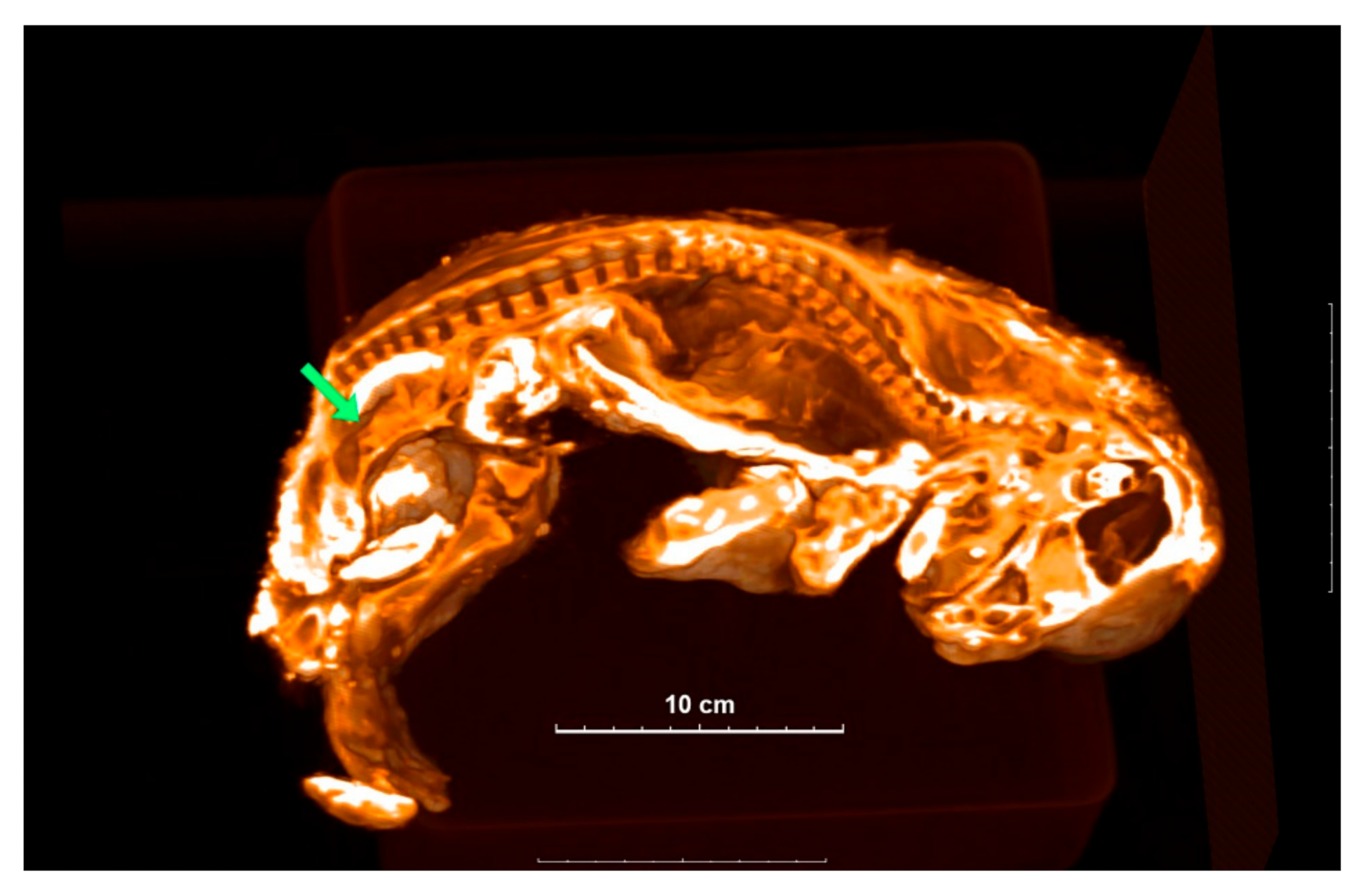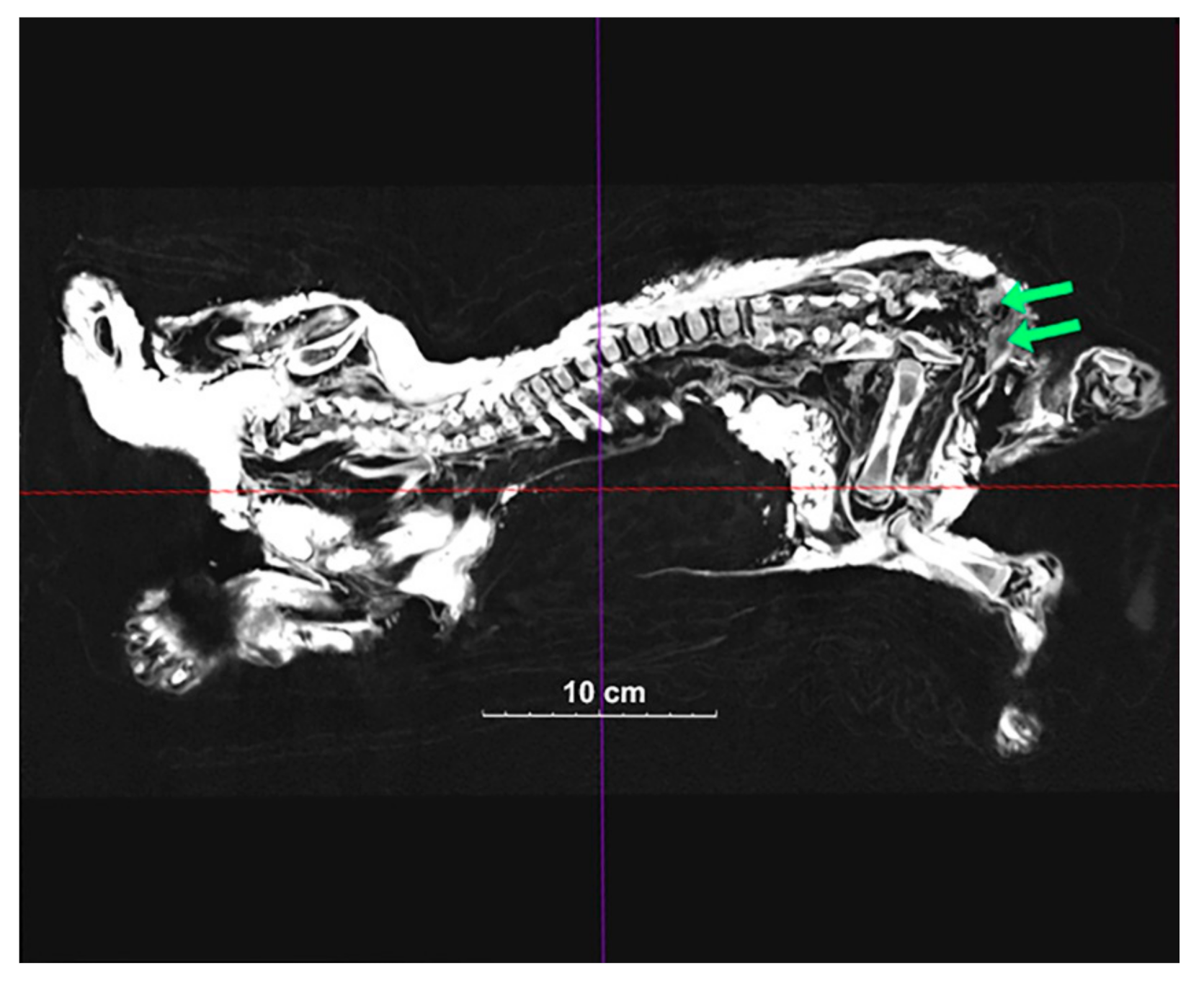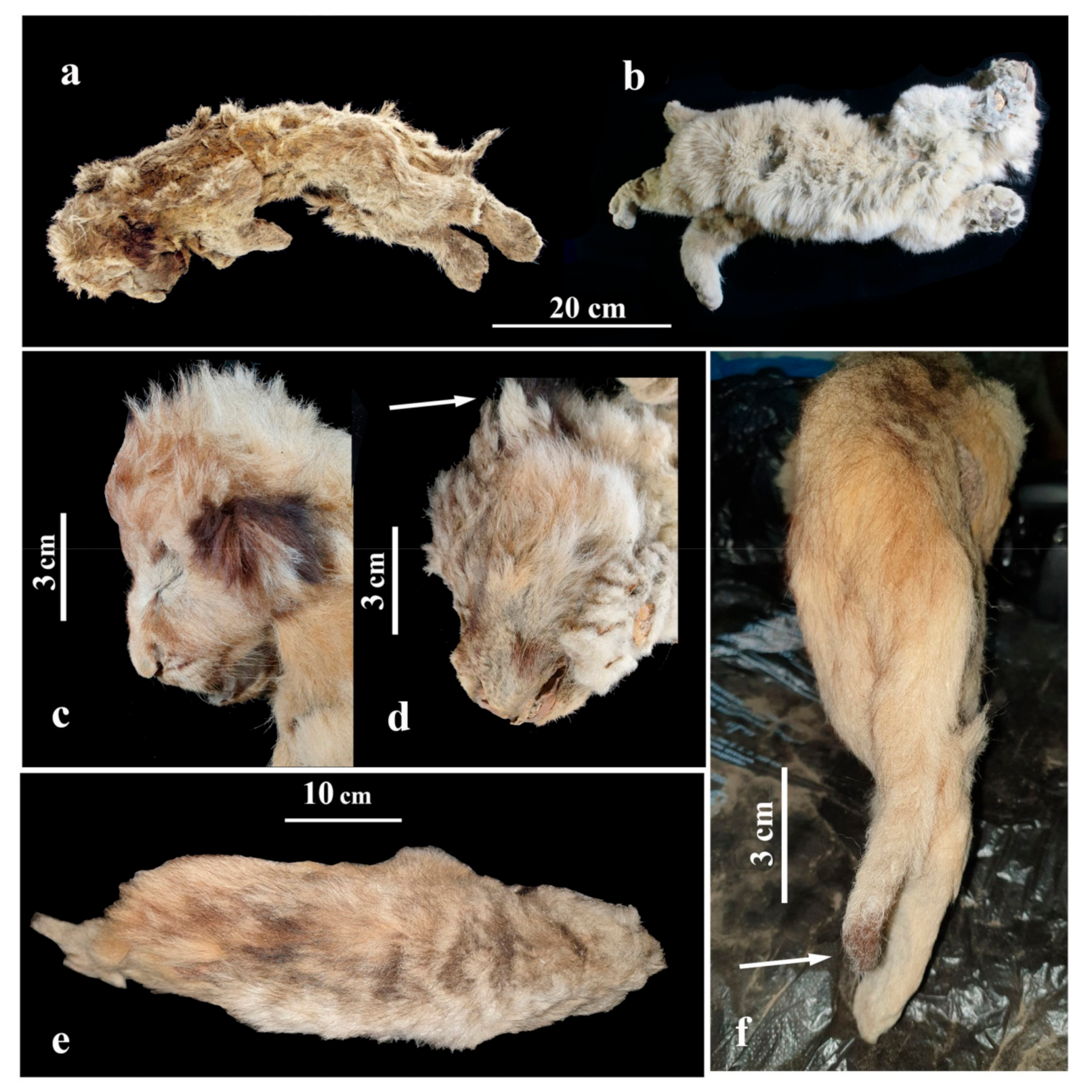Wed 11 August 2021:
Nearly 28,000-year-old cave lion cub was discovered perfectly preserved and frozen deep in the Siberian arctic, making it one of the world’s best-preserved ice age animals, according to an expert.
Sparta, as this female cave lion is called, is estimated to be 27,962 years old, according to a study published this month in the journal Quarternary. It may be the most well-preserved specimen ever found—so intact that she still has whiskers, reports Carly Cassella of ScienceAlert. Sparta was likely one or two months old at the time of death.

A 3D image of Sparta is sectioned to show the inside structure. Green arrow shows the location of the uterus-like organ.
The lion, nicknamed Sparta, was one of two baby cave lions found in the area. Both cave lions, extinct felines that used to roam mainly across the Northern Hemisphere, were found in 2017 and 2018 by mammoth tusk hunters in Russia’s Far East on the banks of the Semyuelyakh River.
Scientists found this Ice Age cave lion (panthera spelaea) and another less-intact cub named Boris, estimated to be 43,448 years old, at a dig site near the Senyalyakh River in eastern Siberia above the Arctic Circle. Larger than African lions, the species lived in colder climates across Eurasia until going extinct about 10,000 years ago, reports Tim Fitzsimmons of NBC News.

A 2D image of Boris’ inside structure. Green arrows show the testicle-like organs.
“To my knowledge, this is the best-preserved frozen specimen from the last Ice Age ever found,” study author Love Dalén, an evolutionary geneticist Stockholm University’s Centre for Palaeogenetics, tells NBC News. “Sparta is in near-perfect condition.”
Cave lions coexisted with early humans for thousands of years, according to the study. For example, the Chauvet Cave in France depicts cave lions drawn on walls. The early cave paintings are estimated to be more than 30,000 years old.
The coloration of cub fur appears different than that of mature cave lions, requiring further study to determine if aging causes changes. Researchers also noted similarities in the fur between the Ice Age big cats and lions that still roam the savannas of Africa. The species is thought to have smaller manes than African lions while adapting to exist in colder climates.

Appearance of the frozen mummies of fossil cave lion cubs: (a) female Sparta; (b) male Boris. Photos of lion cubs’ heads from the side: (c) Sparta; (d) Boris; (e) Sparta mummy as seen from above; (f) dark brown ‘brush’ of Sparta’s tail.
“Cave lion fur also has a long thick fur undercoat consisting of strombuliform aeriferous fur hair,” the report states. “It covers the body of a cave lion cub evenly and most likely helped cave lion cubs adapt to the cold climate.”
While generally intact, scans of the cub corpses showed they had suffered skull damage, dislocated ribs and other injuries at the time of death. No signs of predation were found, leading researchers to speculate the cub had died accidentally.
“Given their preservation they must have been buried very quickly,” Dalén tells Katie Hunt of CNN. “So maybe they died in a mudslide, or fell into a crack in the permafrost. Permafrost forms large cracks due to seasonal thawing and freezing.”
Scientists are hoping to sequence the genome of both cubs to gain a better understanding of the extinct species.
Photo: (Love Dalén/Stockhom University’s Centre for Palaeogenetics via Twitter)
———————————————————————————————————————-
FOLLOW INDEPENDENT PRESS:
TWITTER (CLICK HERE)
https://twitter.com/IpIndependent
FACEBOOK (CLICK HERE)
https://web.facebook.com/ipindependent
Think your friends would be interested? Share this story!





